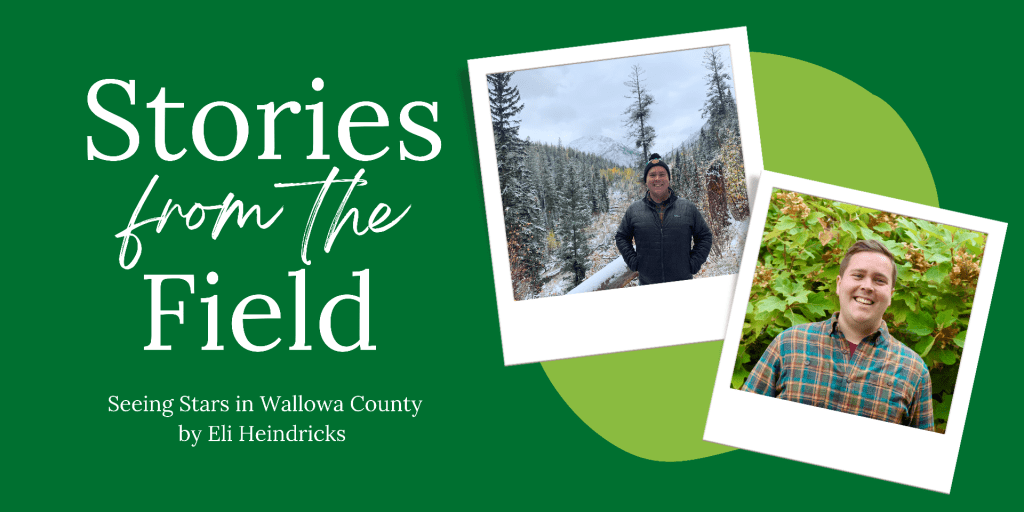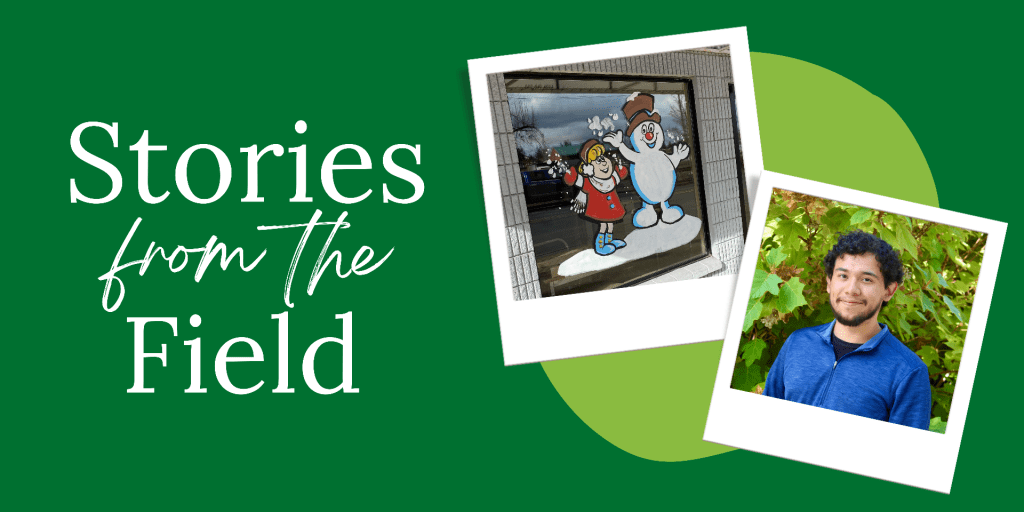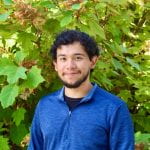by Eli Heindricks, Regional Main Street Coordinator, Northeast Oregon Economic Development District
It’s amazing how different two RARE placements can be. Last year, I served my first year in the RARE program with Marion County’s Economic Development program. I was based in Salem (one of the three most populated cities in the State), working on rural broadband for agricultural communities and wildfire-impacted regions of the North Santiam Canyon. Though I lived and worked in the city’s center, the focus of my work was on the communities just beyond the reach of I-5. It’s amazing how small and remote a community can feel that’s just over 10 minutes from Oregon’s capital city.
At least, that’s what my archetype for rural was last year. Flashforward to my second year in the RARE program and I’ve discovered an entirely new (though not necessarily different) meaning of “rural.” Drive five hours East of Portland along the Oregon Trail to find a place that feels distinct from the population centers West of the Cascades. When I first took that drive through Sage-brushed desert, a stretch of the Blue Mountains cheerfully referred to as Deadman Pass, and rolling fields of grain interspersed with the occasional herd of cattle to arrive in my new placement community, I knew I was in for a drastically different experience than my first year. For starters, the welcoming committee in Salem didn’t include a black bear, munching on juniper berries alongside a winding canyon road.
During my second year, I’ve been working with the Northeast Oregon Economic Development District, or NEOEDD (an acronym I still struggle to say successfully), on developing a regional Main Street program in Wallowa County. I live and work in Enterprise, OR, a small city that sits near the base of the Wallowa Mountains and at the end of that meandering drive I described. Though Enterprise is roughly the same size as my hometown in Indiana and larger than many of the communities I worked with in Marion County, it feels more remote here. Maybe it’s the fact that Wallowa County is technically “Frontier” country, meaning there are 6 or fewer people per square mile. Maybe it’s the fact that cows outnumber people 6:1. Maybe it’s the fact that the nearest Starbucks is over an hour away. In any case, I have never had the opportunity to live and work in a community as rural as Wallowa County. There’s a strong sense of community here, whether you’re meetings folks at a community cider pressing or swinging by Terminal Gravity Brewing Company for a pint. Everyone here is friendly and seemingly excited about their community. This is exactly the reason why I wanted to come here.
Wallowa County is exactly the sort of place to pilot a new approach to rural development. Regional Main Street is a new approach being developed by Oregon Main Street that seeks to help small communities that otherwise wouldn’t have the capacity to continuously operate their own traditional Main Street organization. The amount of work and funding required to run a Main Street program can be a difficult lift for rural communities. Oftentimes, rural Main Street organizations are volunteer led, at least until those volunteers experience burnout. Unfortunately, many of those organizations subsequently fall to the wayside until another Main Street champion in the community emerges sometime later, potentially years later.
A regional approach to Main Street seeks to help fix these sorts of issues. By having communities band together under the umbrella of a regional organization, rural communities have access to the resources and support provided by Oregon Main Street without needing to bare the weight of the organization entirely on their shoulders. When meeting with community members, I tend to explain it as having the regional organization deal with the nuts and bolts, or “administrative headache”, of Main Street work while leaving the placemaking and project work to the communities themselves. In the structure we’ve created here in Wallowa County, that would mean enabling a city to develop and manage a grant-funded project while leaving the grant’s reporting and invoicing to the regional program’s staff (NEOEDD and myself).
Wallowa County is the perfect place to pilot this sort of program. With one well maintained road that leads into the County, the small communities here feel separate from the rest of Oregon based on its geography. Rural here feels different than I’ve experienced before. There’s a rugged individualism here that feels earned and should be respected, whether you’re talking with a 4th generation rancher or one of the many resident writers or artists. At the same time there’s a strong sense of community that binds people together. A regional Main Street program can help these communities showcase their unique character and history. At the same time, this program can simultaneously increase the livability and economic vitality of a region many call home.
I came to Wallowa County because I wanted to experience what its like to live and work in a uniquely remote part of Oregon. As I’ve gotten situated in my new placement, there have definitely been challenging moments. However, the communities and people I have gotten to work with and the awe-inspiring beauty of this seemingly hidden region make every day worth it. It’s a small thing, but it’s been a long time since I’ve lived in a place where I can see stars within city-limits. Here in Wallowa County, the view is spectacular.
 About the author, Eli Heindricks: Originally from a small town in central Indiana, Eli Heindricks is a graduate of Purdue University with degrees in Economics and Political Science. During Eli’s first year in the RARE program, he served as a Rural Broadband Specialist with Marion County Economic Development. While working on broadband, Eli’s project focused on bringing high speed, reliable internet to agricultural communities and wildfire-impacted communities in the North Santiam Canyon. When not working, you can often find Eli camping, cooking, or reading at coffee shops.
About the author, Eli Heindricks: Originally from a small town in central Indiana, Eli Heindricks is a graduate of Purdue University with degrees in Economics and Political Science. During Eli’s first year in the RARE program, he served as a Rural Broadband Specialist with Marion County Economic Development. While working on broadband, Eli’s project focused on bringing high speed, reliable internet to agricultural communities and wildfire-impacted communities in the North Santiam Canyon. When not working, you can often find Eli camping, cooking, or reading at coffee shops.
Interested in gaining community and economic development experience of your own? Are you looking for a life changing experience in rural Oregon? Learn more about serving with the RARE AmeriCorps Program. Applications for Year 30 (2023-24) due April 30, 2023 by 11:59pm PDT.



